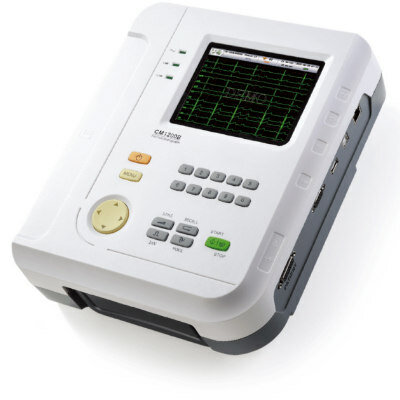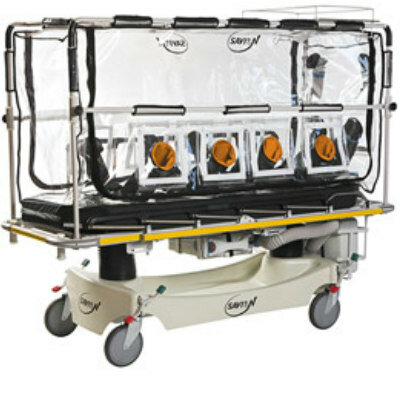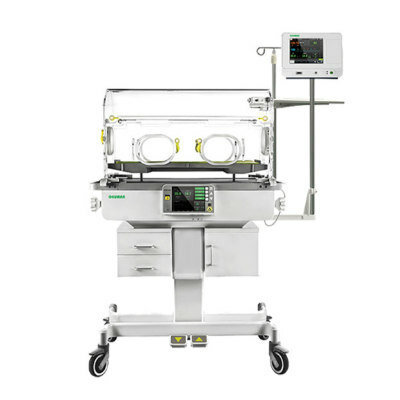Health Summit to Play Greater Role in Chinese Health Industry
|
By HospiMedica International staff writers Posted on 09 May 2018 |

The Health Industry Summit 2018 covered the entire industry value chain, including key segments such as medical devices, pharmaceutical production, drug distribution and natural health and nutrition (Photo courtesy of tHIS).
The Health Industry Summit (tHIS) 2018 held at the National Exhibition and Convention Center in Shanghai on April 11, 2018, was the largest gathering of healthcare industry professionals in the world with well over 200,000 attendees from more than 150 countries and regions and over 7,000 exhibitors. The fourth edition of tHIS covered an exhibition space of over 350,000 square meters with 160 individual events and conferences being held alongside the main expo.
tHIS 2018 is fast becoming China's solution for promoting technology innovations and academic exchange in the medical healthcare arena. China is the second-largest healthcare market in the world and is one of the most attractive in the world for foreign investors. A recent report from McKinsey & Co. estimates China's healthcare market to grow at an unprecedented CAGR of about 12% from USD 357 billion in 2011 to reach USD 1 trillion by 2020. The growth of the Chinese healthcare market is expected to be driven mainly by the country’s ageing population, rise in incidences of lifestyle related diseases such as diabetes and cancer, and major steps taken by the government to improve the local healthcare infrastructure. Recent regulatory changes by the Chinese government are expected to speed up the approvals of medicines and medical devices, thus easing the process of introducing new treatments to the market.
Additionally, under its “Made in China 2025” plan, the Chinese government is focusing on the development of high-performance devices such as diagnostic imaging equipment, robotic surgery devices, high-end medical consumables, including fully degradable cardiovascular stents, wearable devices, and telemedicine. With local companies increasing their technological capabilities and producing high-end medical devices, China’s medical device market will continue to strengthen even as the competition between the players intensifies.
In line with the call by Chinese President Xi for greater promotion of the country’s health industry at the Boao Forum for Asia, tHIS 2018 covered the entire industry value chain, including key segments such as medical devices, pharmaceutical production, drug distribution and natural health and nutrition. The key events at the four-day summit included China's top medical equipment and pharmaceutical exhibitions CMEF, PHARMCHINA and API China, which showcased cutting-edge technologies such as virtual reality, augmented reality, wearables and artificial intelligence as part of the new Intelligent Health exhibition. The show also highlighted traditional medicine as China's own solutions for treatment and prevention, which runs parallel to modern medicine and drug development.
Various medical device giants such as GE, United Imaging, Siemens, Philips and Mindray as well as major pharmaceutical groups in China including Sinopharm, Shanghai Pharma and CR Pharmaceuticals used the show as a platform to launch more than 600 new products for the global or Asia Pacific markets.
tHIS 218 was hosted by Reed Sinopharm, a joint venture between the world's leading event organizer Reed Exhibitions and China's state-owned medical & pharmaceutical giant Sinopharm. The next edition of the event is scheduled to be held in May 2019 in Shanghai.
Related Links:
Reed Sinopharm
tHIS 2018 is fast becoming China's solution for promoting technology innovations and academic exchange in the medical healthcare arena. China is the second-largest healthcare market in the world and is one of the most attractive in the world for foreign investors. A recent report from McKinsey & Co. estimates China's healthcare market to grow at an unprecedented CAGR of about 12% from USD 357 billion in 2011 to reach USD 1 trillion by 2020. The growth of the Chinese healthcare market is expected to be driven mainly by the country’s ageing population, rise in incidences of lifestyle related diseases such as diabetes and cancer, and major steps taken by the government to improve the local healthcare infrastructure. Recent regulatory changes by the Chinese government are expected to speed up the approvals of medicines and medical devices, thus easing the process of introducing new treatments to the market.
Additionally, under its “Made in China 2025” plan, the Chinese government is focusing on the development of high-performance devices such as diagnostic imaging equipment, robotic surgery devices, high-end medical consumables, including fully degradable cardiovascular stents, wearable devices, and telemedicine. With local companies increasing their technological capabilities and producing high-end medical devices, China’s medical device market will continue to strengthen even as the competition between the players intensifies.
In line with the call by Chinese President Xi for greater promotion of the country’s health industry at the Boao Forum for Asia, tHIS 2018 covered the entire industry value chain, including key segments such as medical devices, pharmaceutical production, drug distribution and natural health and nutrition. The key events at the four-day summit included China's top medical equipment and pharmaceutical exhibitions CMEF, PHARMCHINA and API China, which showcased cutting-edge technologies such as virtual reality, augmented reality, wearables and artificial intelligence as part of the new Intelligent Health exhibition. The show also highlighted traditional medicine as China's own solutions for treatment and prevention, which runs parallel to modern medicine and drug development.
Various medical device giants such as GE, United Imaging, Siemens, Philips and Mindray as well as major pharmaceutical groups in China including Sinopharm, Shanghai Pharma and CR Pharmaceuticals used the show as a platform to launch more than 600 new products for the global or Asia Pacific markets.
tHIS 218 was hosted by Reed Sinopharm, a joint venture between the world's leading event organizer Reed Exhibitions and China's state-owned medical & pharmaceutical giant Sinopharm. The next edition of the event is scheduled to be held in May 2019 in Shanghai.
Related Links:
Reed Sinopharm
Latest Business News
- Johnson & Johnson Acquires Cardiovascular Medical Device Company Shockwave Medical
- Mindray to Acquire Chinese Medical Device Company APT Medical
- Olympus Acquires Korean GI Stent Maker Taewoong Medical
- Karl Storz Acquires British AI Specialist Innersight Labs
- Stryker to Acquire French Joint Replacement Company SERF SAS
- Medical Illumination Acquires Surgical Lighting Specialist Isolux
- 5G Remote-Controlled Robots to Enable Even Cross-Border Surgeries

- International Hospital Federation Announces 2023 IHF Award Winners
- Unprecedented AI Integration Transforming Surgery Landscape, Say Experts

- New WHO Guidelines to Revolutionize AI in Healthcare
- Getinge Acquires US-Based Medical Equipment Provider Healthmark Industries
- Global Surgical Lights Market Driven by Increasing Number of Procedures
- Global Capsule Endoscopy Market Driven by Demand for Accurate Diagnosis of Gastrointestinal Conditions
- Global OR Integration Market Driven by Need for Improved Workflow Efficiency and Productivity
- Global Endoscopy Devices Market Driven by Increasing Adoption of Endoscopes in Surgical Procedures
- Global Minimally Invasive Medical Devices Market Driven by Benefits of MIS Procedures
Channels
Artificial Intelligence
view channel
AI-Powered Algorithm to Revolutionize Detection of Atrial Fibrillation
Atrial fibrillation (AFib), a condition characterized by an irregular and often rapid heart rate, is linked to increased risks of stroke and heart failure. This is because the irregular heartbeat in AFib... Read more
AI Diagnostic Tool Accurately Detects Valvular Disorders Often Missed by Doctors
Doctors generally use stethoscopes to listen for the characteristic lub-dub sounds made by heart valves opening and closing. They also listen for less prominent sounds that indicate problems with these valves.... Read moreCritical Care
view channel
Deep-Learning Model Predicts Arrhythmia 30 Minutes before Onset
Atrial fibrillation, the most common type of cardiac arrhythmia worldwide, affected approximately 59 million people in 2019. Characterized by an irregular and often rapid heart rate, atrial fibrillation... Read more
Breakthrough Technology Combines Detection and Treatment of Nerve-Related Disorders in Single Procedure
The peripheral nervous system (PNS) serves as the communication network that links the brain and spinal cord to every other part of the body. It consists of two parts: the somatic nervous system, which... Read moreSurgical Techniques
view channel
Hydrogel-Based Miniaturized Electric Generators to Power Biomedical Devices
The development of engineered devices that can harvest and convert the mechanical motion of the human body into electricity is essential for powering bioelectronic devices. This mechanoelectrical energy... Read moreWearable Technology Monitors and Analyzes Surgeons' Posture during Long Surgical Procedures
The physical strain associated with the static postures maintained by neurosurgeons during long operations can lead to fatigue and musculoskeletal problems. An objective assessment of surgical ergonomics... Read more.jpg)
Custom 3D-Printed Orthopedic Implants Transform Joint Replacement Surgery
The evolving field of 3D printing is revolutionizing orthopedics, especially for individuals requiring joint replacement surgeries where traditional implants fail to provide a solution. Although most people... Read more
Cutting-Edge Imaging Platform Detects Residual Breast Cancer Missed During Lumpectomy Surgery
Breast cancer is becoming increasingly common, with statistics indicating that 1 in 8 women will develop the disease in their lifetime. Lumpectomy remains the predominant surgical intervention for treating... Read morePatient Care
view channel
Surgical Capacity Optimization Solution Helps Hospitals Boost OR Utilization
An innovative solution has the capability to transform surgical capacity utilization by targeting the root cause of surgical block time inefficiencies. Fujitsu Limited’s (Tokyo, Japan) Surgical Capacity... Read more
Game-Changing Innovation in Surgical Instrument Sterilization Significantly Improves OR Throughput
A groundbreaking innovation enables hospitals to significantly improve instrument processing time and throughput in operating rooms (ORs) and sterile processing departments. Turbett Surgical, Inc.... Read more
Next Gen ICU Bed to Help Address Complex Critical Care Needs
As the critical care environment becomes increasingly demanding and complex due to evolving hospital needs, there is a pressing requirement for innovations that can facilitate patient recovery.... Read moreGroundbreaking AI-Powered UV-C Disinfection Technology Redefines Infection Control Landscape
Healthcare-associated infection (HCAI) is a widespread complication in healthcare management, posing a significant health risk due to its potential to increase patient morbidity and mortality, prolong... Read moreHealth IT
view channel
Machine Learning Model Improves Mortality Risk Prediction for Cardiac Surgery Patients
Machine learning algorithms have been deployed to create predictive models in various medical fields, with some demonstrating improved outcomes compared to their standard-of-care counterparts.... Read more
Strategic Collaboration to Develop and Integrate Generative AI into Healthcare
Top industry experts have underscored the immediate requirement for healthcare systems and hospitals to respond to severe cost and margin pressures. Close to half of U.S. hospitals ended 2022 in the red... Read more
AI-Enabled Operating Rooms Solution Helps Hospitals Maximize Utilization and Unlock Capacity
For healthcare organizations, optimizing operating room (OR) utilization during prime time hours is a complex challenge. Surgeons and clinics face difficulties in finding available slots for booking cases,... Read more
AI Predicts Pancreatic Cancer Three Years before Diagnosis from Patients’ Medical Records
Screening for common cancers like breast, cervix, and prostate cancer relies on relatively simple and highly effective techniques, such as mammograms, Pap smears, and blood tests. These methods have revolutionized... Read morePoint of Care
view channel
Critical Bleeding Management System to Help Hospitals Further Standardize Viscoelastic Testing
Surgical procedures are often accompanied by significant blood loss and the subsequent high likelihood of the need for allogeneic blood transfusions. These transfusions, while critical, are linked to various... Read more
Point of Care HIV Test Enables Early Infection Diagnosis for Infants
Early diagnosis and initiation of treatment are crucial for the survival of infants infected with HIV (human immunodeficiency virus). Without treatment, approximately 50% of infants who acquire HIV during... Read more
Whole Blood Rapid Test Aids Assessment of Concussion at Patient's Bedside
In the United States annually, approximately five million individuals seek emergency department care for traumatic brain injuries (TBIs), yet over half of those suspecting a concussion may never get it checked.... Read more















